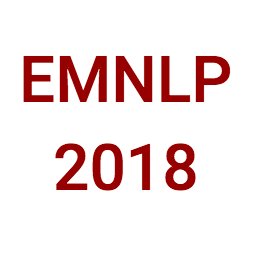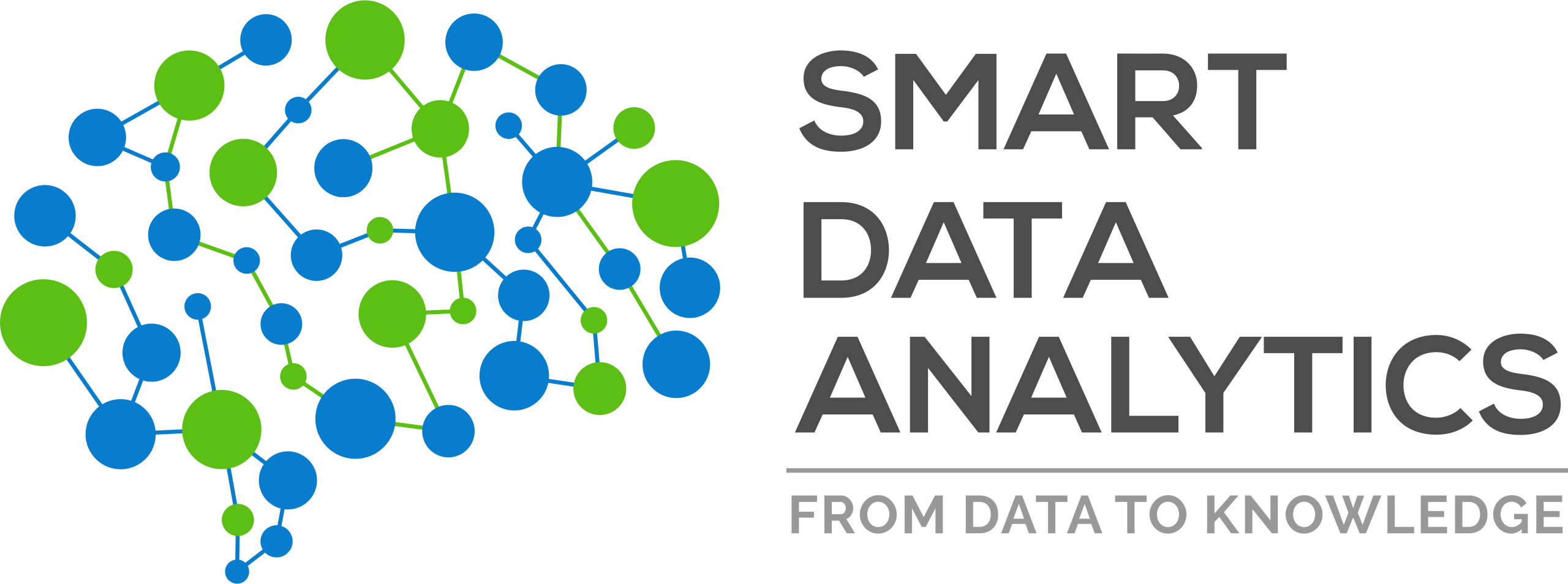 We are very pleased to announce that our group got 3 workshop papers accepted for presentation at EMNLP 2018 conference, that will be held on 1st of November 2018, Brussels, Belgium.
We are very pleased to announce that our group got 3 workshop papers accepted for presentation at EMNLP 2018 conference, that will be held on 1st of November 2018, Brussels, Belgium.
FEVER: The First Workshop on Fact Extraction and Verification: With billions of individual pages on the web providing information on almost every conceivable topic, we should have the ability to collect facts that answer almost every conceivable question. However, only a small fraction of this information is contained in structured sources (Wikidata, Freebase, etc.) – we are therefore limited by our ability to transform free-form text to structured knowledge. There is, however, another problem that has become the focus of a lot of recent research and media coverage: false information coming from unreliable sources. In an effort to jointly address both problems, a workshop promoting research in joint Fact Extraction and VERification (FEVER) has been proposed.
W-NUT: The 4th Workshop on Noisy User-generated Text: focuses on Natural Language Processing applied to noisy user-generated text, such as that found in social media, online reviews, crowdsourced data, web forums, clinical records and language learner essays.
Here are the accepted papers with their abstracts:
- Belittling the Source: Trustworthiness Indicators to Obfuscate Fake News on the Web by Diego Esteves, Aniketh Janardhan Reddy, Piyush Chawla and Jens Lehmann.
Abstract: With the growth of the internet, the number of fake-news online has been proliferating every year. The consequences of such phenomena are manifold, ranging from lousy decision-making process to bullying and violence episodes. Therefore, fact-checking algorithms became a valuable asset. To this aim, an important step to detect fake-news is to have access to a credibility score for a given information source. However, most of the widely used Web indicators have either been shut-down to the public (e.g., Google PageRank) or are not free for use (Alexa Rank). Further existing databases are short-manually curated lists of online sources, which do not scale. Finally, most of the research on the topic is theoretical-based or explore confidential data in a restricted simulation environment. In this paper we explore current research, highlight the challenges and propose solutions to tackle the problem of classifying websites into a credibility scale. The proposed model automatically extracts source reputation cues and computes a credibility factor, providing valuable insights which can help in belittling dubious and confirming trustful unknown websites. Experimental results outperform state of the art in the 2-classes and 5-classes setting.
Abstract: Named Entity Recognition (NER) is an important subtask of information extraction that seeks to locate and recognise named entities. Despite recent achievements, we still face limitations in correctly detecting and classifying entities, prominently in short and noisy text, such as Twitter. An important negative aspect in most of NER approaches is the high dependency on hand-crafted features and domain-specific knowledge, necessary to achieve state-of-the-art results. Thus, devising models to deal with such linguistically complex contexts is still challenging. In this paper, we propose a novel multi-level architecture that does not rely on any specific linguistic resource or encoded rule. Unlike traditional approaches, we use features extracted from images and text to classify named entities. Experimental tests against state-of-the-art NER for Twitter on the Ritter dataset present competitive results (0.59 F-measure), indicating that this approach may lead towards better NER models.
- DeFactoNLP: Fact Verification using Entity Recognition, TFIDF Vector Comparison and Decomposable Attention by Aniketh Janardhan Reddy and Gil Rocha and Diego Esteves.
Abstract: In this paper, we describe DeFactoNLP, the system we designed for the FEVER 2018 Shared Task. The aim of this task was to conceive a system that can not only automatically assess the veracity of a claim but also retrieve evidence supporting this assessment from Wikipedia. In our approach, the Wikipedia documents whose Term Frequency-Inverse Document Frequency (TFIDF) vectors are most similar to the vector of the claim and those documents whose names are similar to those of the named entities (NEs) mentioned in the claim are identified as the documents which might contain evidence. The sentences in these documents are then supplied to a textual entailment recognition module. This module calculates the probability of each sentence supporting the claim, contradicting the claim or not providing any relevant information to assess the veracity of the claim. Various features computed using these probabilities are finally used by a Random Forest classifier to determine the overall truthfulness of the claim. The sentences which support this classification are returned as evidence. Our approach achieved a 0.4277 evidence F1-score, a 0.5136 label accuracy and a 0.3833 FEVER score.
Acknowledgment
This research was partially supported by an EU H2020 grant provided for the WDAqua project (GA no. 642795) and by the DAAD under the “International promovieren in Deutschland fur alle” (IPID4all) project.
Looking forward to seeing you at The EMNLP/FEVER 2018.

